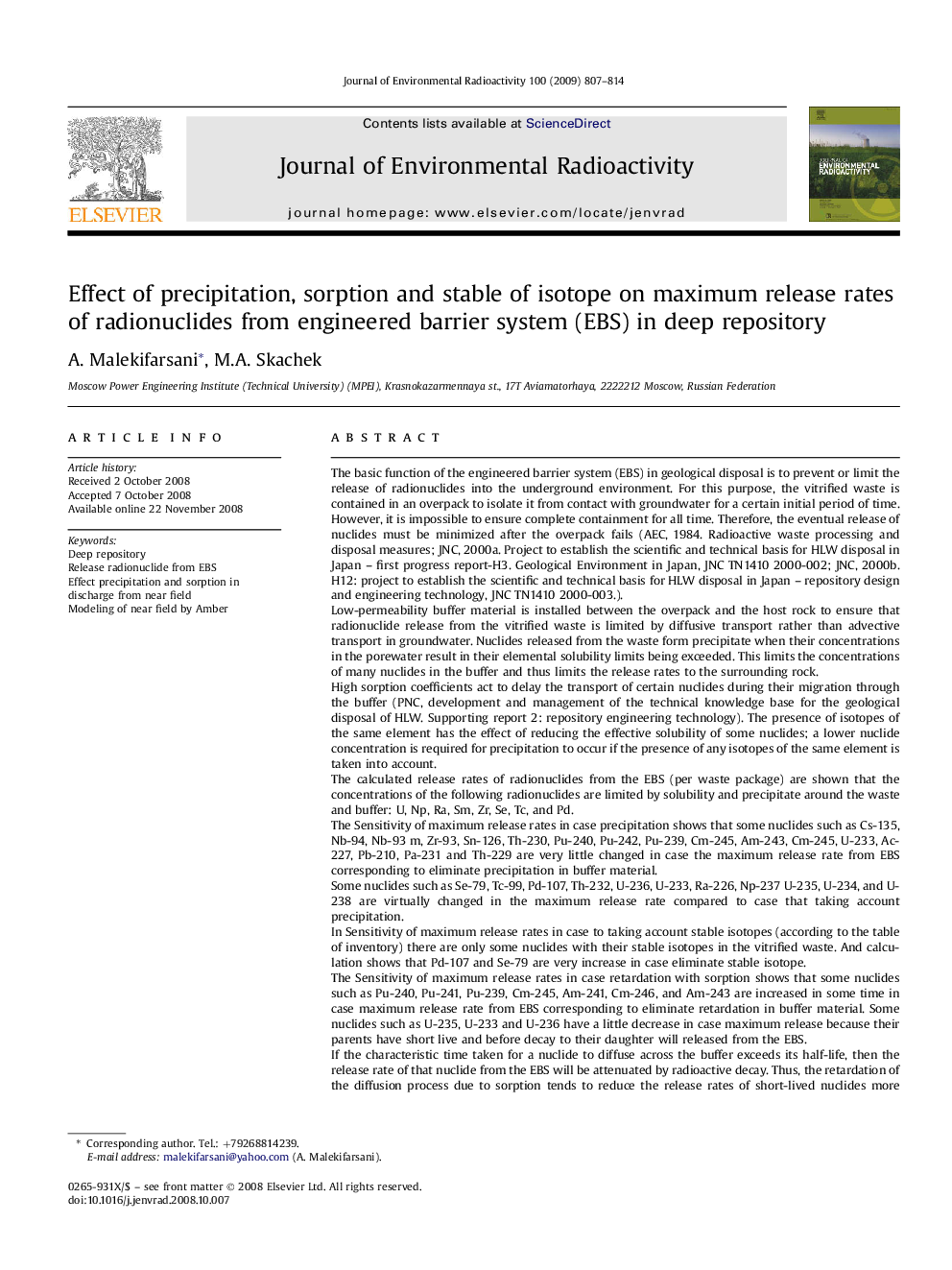| Article ID | Journal | Published Year | Pages | File Type |
|---|---|---|---|---|
| 1738976 | Journal of Environmental Radioactivity | 2009 | 8 Pages |
Abstract
If the characteristic time taken for a nuclide to diffuse across the buffer exceeds its half-life, then the release rate of that nuclide from the EBS will be attenuated by radioactive decay. Thus, the retardation of the diffusion process due to sorption tends to reduce the release rates of short-lived nuclides more effectively than for the long-lived ones. For example, release rates of Pu-240, Cm-246 and Am-241, which are relatively short-lived and strongly sorbing, are very small, whereas that of Zr-93, which is also strongly sorbing but long-lived, is significantly higher.
Related Topics
Physical Sciences and Engineering
Energy
Nuclear Energy and Engineering
Authors
A. Malekifarsani, M.A. Skachek,
